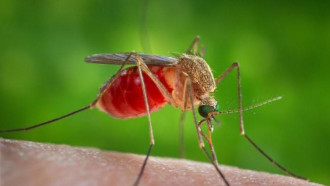Rebranded modern slavery fight struggles for definition

London: At first glance a foreign domestic worker in Hong Kong, a Rohingya migrant toiling on a fishing boat, a sex worker walking the streets of Mumbai and a child labourer cutting bamboo in a plantation in the Philippines have nothing in common.
But all four could be slaves, trafficked and exploited by criminals and employers profiting from the world’s fastest growing illicit industry, estimated by the International Labour Organisation (ILO) to be worth $150 billion a year.
In the 15 years since a global treaty to combat human trafficking was adopted, modern slavery has gradually taken over as a catch-all term to describe human trafficking, forced labour, debt bondage, forced marriage and other slave-like exploitation.
The term has helped to ignite outrage among the public, but some experts argue the rebranding of human trafficking as modern slavery over-simplifies the complex reasons why millions have been forced to work in brothels, farms, fisheries, factories and homes.
‘By applying the modern slavery label to all these abuses, it’s easy to pitch it as a problem of good and bad, of innocent victims and evil perpetrators,’ said Janie Chuang, a professor at the American University Washington College of Law.
There is no globally agreed definition of modern slavery. Not all children who are exposed to hazardous work are slaves, and not all workers who are paid unfairly are forced labourers, yet both are often referred to as victims of modern slavery.
Lack of coordination
Legally sound definitions are crucial to improving coordination of national, regional and international efforts to stamp out slavery, experts say.
They also help efforts to collect better data on the number of slaves, a hotly debated issue as estimates range from 21 million to 36 million, depending on the methodology of surveys.
The Walk Free Foundation, creator of the Global Slavery Index, which puts the number of slaves at 36 million, said it took a strategic decision to use the term modern slavery rather than human trafficking.
‘For an everyday audience it tends to be pretty well understood whereas with other concepts you need to give a lot more context,’ said Fiona David, a lawyer and director of global research at the Australian foundation.
‘It meant we could work with as many organisations as possible, while also recognising the legal concepts behind human trafficking, forced labour, slavery or slavery-like practices,’ said David.
Risk of ‘exploitation creep’
Chuang argues that modern slavery is a term without a legal base, and that its inflationary use undermines prosecutions and trafficked persons’ rights to remedy and assistance.
She noted cases in the United States where the use of slavery images by defence lawyers in trafficking prosecutions had raised jurors’ expectations of the harm done to victims.
‘People will expect that to be a victim of modern slavery you will have been chained and beaten and as a result the less violent abuses are likely to trigger less empathy,’ said Chuang.
Another risk of such ‘exploitation creep’, as Chuang puts it, is that the reasons for modern slavery are neither recognised nor rectified in a structured manner.
‘It’s a useful distraction for those who would rather not look at the structural reasons behind these issues,’ she said.
While researchers agree growing inequality in global labour markets has created a fertile ground for human trafficking and exploitation of migrants, there is little evidence of concrete coordinated steps being taken to address the issue.
‘The critical issues of migration, citizenship and border control are all closely connected to trafficking and forced labour but not many nations are willing to think about it in that way,’ said Marie Segrave, a criminologist at Monash University in Melbourne, Australia.
David said the Walk Free Foundation tried to address the complex reasons for modern slavery by including 37 indicators such as discrimination against immigrants, income inequality and access to financial services in its index.
‘A stronger evidence base is a critical part of the way forward,’ she said.
Measuring change
In the Asia-Pacific region, which has the largest number of forced labourers in the world at 11.7 million, forced labour and trafficking are closely linked to migration of people in search of better lives.
‘It’s acknowledged that this is a problem but there is not enough cooperation and so many different concepts now of what constitutes modern slavery,’ said Marja Paavilainen, a chief technical adviser at the ILO in Bangkok.
The ILO is leading efforts to create decent work conditions to reduce migrants’ vulnerability to being trafficked and getting trapped in jobs where they are abused.
Clear definitions are also necessary to measure changes in the number of modern slaves, as the ILO found in its efforts to monitor child labour.
It took ILO member states, workers’ and employers’ organisations more than two years to settle on a definition of child labour when they negotiated a new convention to eliminate the worst forms of child labour, passed in 1999.
The convention, ratified by 180 countries, distinguishes between children who are held in slavery, debt bondage, serfdom, are trafficked or subjected to forced labour and those in hazardous work.
An ILO estimate in 2013 found that child labour had decreased by a third to 168 million over 12 years.
‘By agreeing that not all child labour is modern slavery we have been able to track this issue much more effectively. It’s a good example why definitions matter,’ said Paavilainen.
Experts said the inclusion of a modern slavery target in new UN development goals agreed in September was also a step forward by calling for effective measures to eradicate forced labour and to end modern slavery and human trafficking.
The target also calls for the prohibition and elimination of the worst forms of child labour, including the recruitment and use of child soldiers.

 Reuters
Reuters




